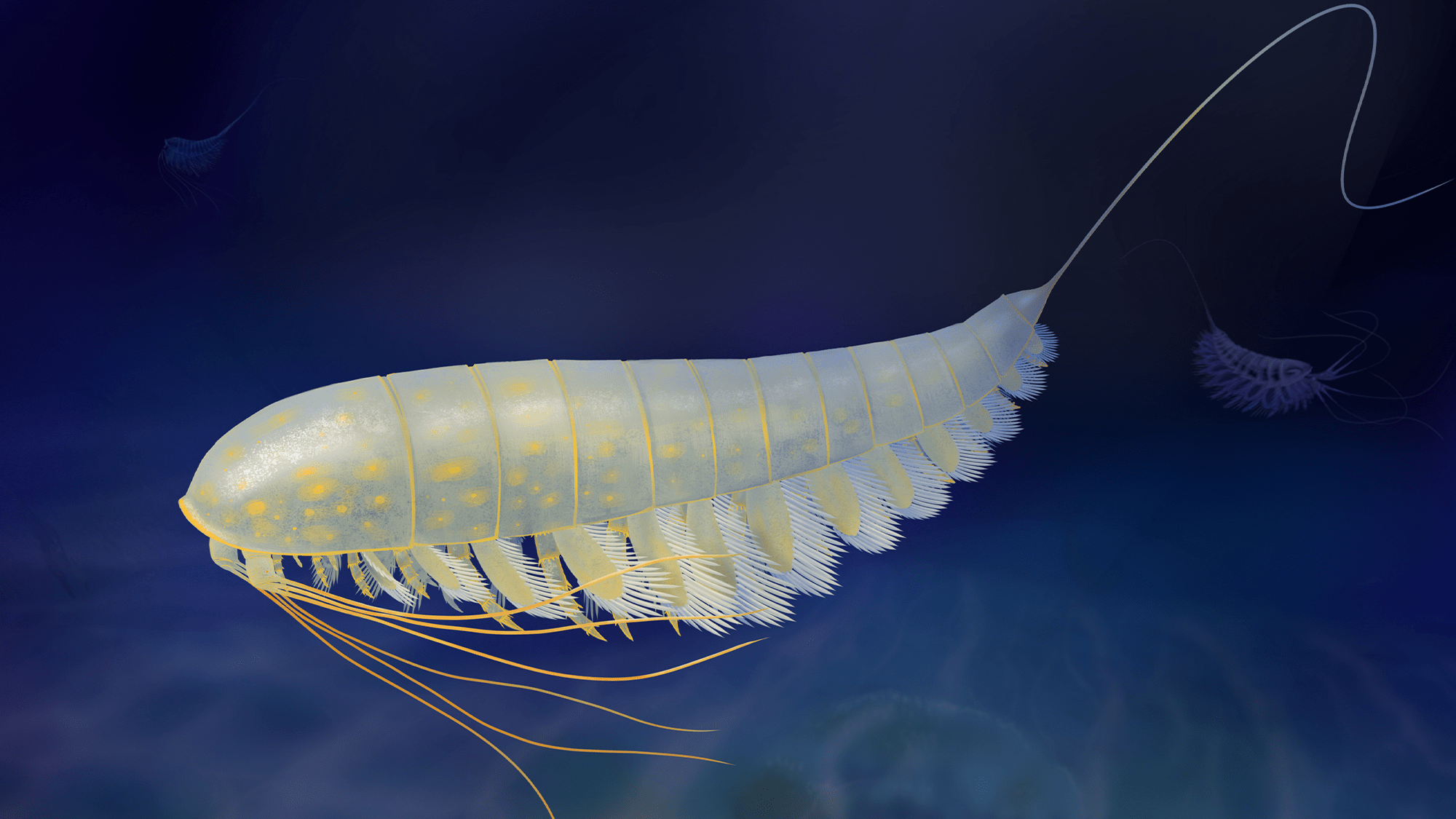Amber preserves all sorts of fossils from mating termites to tiny crabs to tough tardigrades. The richly colored tree resin is not the only substance that can preserve priceless traces of the past. A newly discovered 450-million-year-old fossil arthropod was found entirely preserved in pyrite–aka fool’s gold. The newly named species Lomankus edgecombei boasts a leg coming out of its head called a “great appendage” that likely helped this extinct spider-like creature live in a very hostile world. The findings are detailed in a study published October 29 in the journal Current Biology.
“As well as having their beautiful and striking golden color, these fossils are spectacularly preserved,” study co-author and University of Oxford paleontologist Luke Parry said in a statement. “They look as if they could just get up and scuttle away.”
Arthropods include modern spiders, horseshoe crabs, centipedes, and insects. This new species of Lomankus is considered a megacheiran—an extinct class of arthropods that are defined by their spined great appendages. This diverse group thrived during the Cambrian Period (538-485 million years ago). They had mostly gone extinct by the Ordovician Period (485-443 million years ago).
[Related: A three-eyed organism roamed the seas half a billion years ago.]
The Lomankus fossil was found at the famous Beecher’s Trilobite Bed fossil site in central New York State. This layer of rock contains multiple well-preserved trilobites and other organisms. The animals preserved here lived in a very hostile, dark, and low oxygen environment. However, that environment allowed the fool’s gold to replace some of the body parts after they were buried in the sediment. The results are these golden 3D fossils that can be scanned so scientists can see some hidden details about their anatomy.
“These remarkable fossils show how rapid replacement of delicate anatomical features in pyrite before they decay, which is a signature feature of Beecher’s Trilobite Bed, preserves critical evidence of the evolution of life in the oceans 450 million years ago,” study co-author and Yale University paleontologist Derek Briggs said in a statement.
This new finding gives scientists new clues to a long-standing arthropod puzzle–how they evolved the appendages on their heads. Some species have one or more pairs of legs located at the front of their bodies. These appendages are typically modified for specialized functions, including sensing the environment and capturing prey. Some examples are the antennae of insects and crustaceans and the formidable pincers and fangs of spiders and scorpions.
“Today, there are more species of arthropod than any other group of animals on Earth,” said Parry. “Part of the key to this success is their highly adaptable head and its appendages, that has adapted to various challenges like a biological Swiss army knife.”
[Related: Trilobites may have jousted with head ‘tridents’ to win mates.]
Other megacheirans used their large first appendage for capturing prey. However, Lomankus appears to have smaller claws, with three long and flexible whip-like flagella at their end. The team believes that Lomankus used this frontal appendage as a way to sense the environment instead of capturing prey. This means that it lived a very different lifestyle to its more ancient relatives from the Cambrian Period. Unlike other megacheirans, Lomankus also appears to lack eyes. It likely would have relied on its frontal appendage to sense for and find food in the dark and low-oxygen environment it lived in.
“Rather than representing a ‘dead end’, Lomankus shows us that megacheirans continued to diversify and evolve long after the Cambrian, with the formerly fearsome great appendage now performing a totally different function,” said Parry.

The new fossil also has clues towards solving a highly-debated paleontological question: What is the equivalent of the great appendage of megacheirans in living species? Based on the scans of this fossil, the team believes that the great appendage is likely the equivalent of the antenna of insects and the mouthparts–or chelicerae–of spiders and scorpions.
“These beautiful new fossils show a very clear plate on the underside of the head, associated with the mouth and flanked by the great appendages,” Yu Liu, a study co-author and paleobiologist at Yunnan University in China, said in a statement. “This is a very similar arrangement to the head of megacheirans from the early Cambrian of China except for the lack of eyes, suggesting that Lomankus probably lived in a deeper and darker niche than its Cambrian relatives.”

